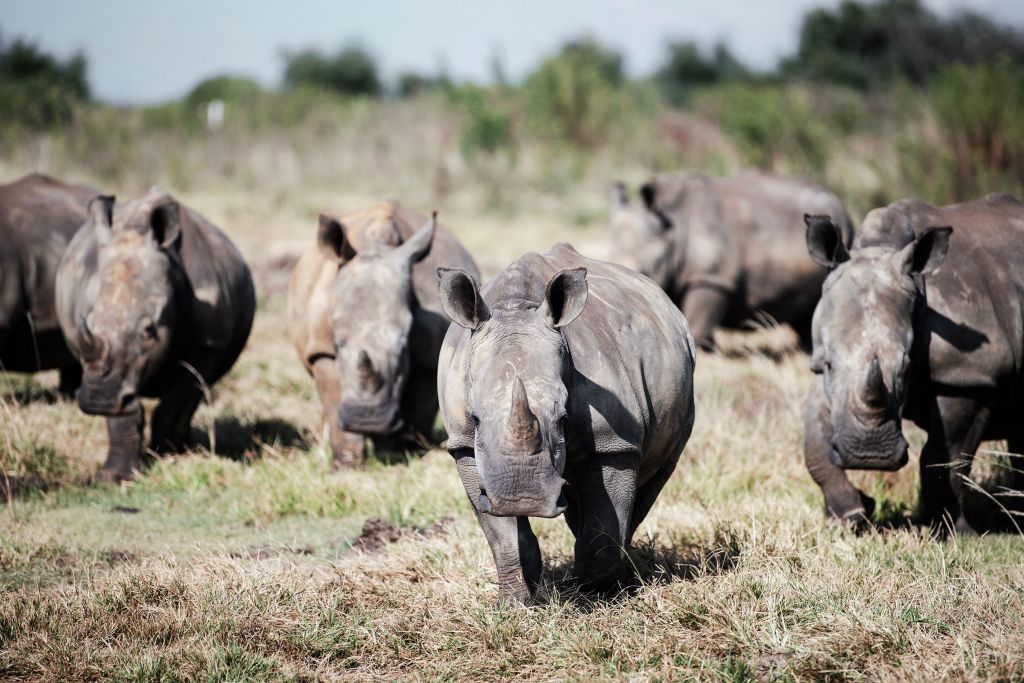Summary of 16 White Rhinos Reintroduced to DR Congo National Park After 40 Years:
Sixteen southern white rhinoceroses have been released into the Garamba National Park in the Democratic Republic of the Congo, a historic move as poaching nearly eradicated the species. Garamba was once the last sanctum of the northern white rhino subspecies, with only two remaining captive females. The operation to transport the rhinos was a collaboration between the Congolese Institute for the Conservation of Nature, conservation NGO African Parks, and Canadian mining company Barrick Gold. The ICCN said the release demonstrated the country’s commitment to conservation. The rhinos have been fitted with GPS collars and ear tags.
*****
– 16 southern white rhinoceroses were reintroduced to Garamba National Park in the Democratic Republic of Congo after being nearly wiped out by poaching.
– The reintroduction is part of a more significant effort to restore Garamba National Park’s wildlife and ecosystems, which have suffered decades of conflict, poaching, and insecurity.
– The southern white rhinos were bred and prepared for translocation by a private reserve in South Africa.
– The southern white rhino subspecies are more numerous and genetically diverse than the northern one. They are considered the closest alternative to fill the ecological role of the northern white rhino in Garamba National Park.
– The hope is that these majestic animals will thrive in their new home and contribute to conserving one of Africa’s most biodiverse regions.
The Reintroduction of White Rhinos to Garamba National Park After 40 Years
It was a moment of historical significance when the southern white rhinoceroses were reintroduced to Garamba National Park after 40 years. The release marked a remarkable achievement of committed collaboration between various stakeholders to protect and restore one of Africa’s most biodiverse regions. The southern white rhinos were transported from a private reserve in South Africa, bred, and prepared for translocation. The operation was led by the Congolese Institute for the Conservation of Nature (ICCN), African Parks, a conservation NGO that manages Garamba National Park, and Barrick Gold, a Canadian mining firm that sponsored the rhino move.
Garamba National Park was established in 1938 and is home to diverse species, such as elephants, giraffes, lions, and chimpanzees. However, the park’s wildlife and ecosystems have suffered decades of conflict, poaching, and insecurity. The reintroduction of the southern white rhinos is part of a more significant effort to restore the park’s biodiversity.
The southern white rhino subspecies are more numerous and genetically diverse than the northern one. They are considered the closest alternative to fill the ecological role of the northern white rhino in Garamba National Park. The northern white rhino subspecies is particularly endangered, with only two females remaining in captivity in Kenya. The last male died in 2018, and the last wild northern white rhino was poached in Garamba National Park in 2006.
White rhinos are classified as near threatened by the International Union for Conservation of Nature (IUCN), with an estimated population of 18,000 individuals in the wild. However, they face severe threats from habitat loss and poaching for their horns, valued in some Asian markets for their supposed medicinal properties.
The southern white rhinos reintroduced to the park have been fitted with GPS collars and ear tags to monitor their movements and health. They will also be protected by a team of rangers and veterinarians who will ensure their safety and well-being. More southern white rhinoceroses are expected to be sent to Garamba National Park as part of a long-term plan to establish a viable population of white rhinos in the DRC.
Reintroducing white rhinos to Garamba National Park is a significant step towards restoring the nation’s wildlife and ecosystems. The hope is that these majestic animals will thrive in their new home and contribute to conserving one of Africa’s most biodiverse regions. Conservationists and wildlife lovers worldwide can celebrate this momentous day in the battle against poaching and the preservation of endangered species.

